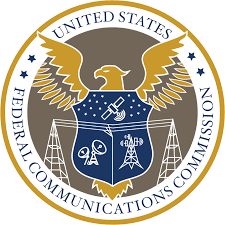
Fast, affordable Internet access for all.

It may not generate a lot of headlines in a national press obsessed with AI and billionaire fist fights, but the debate over the final version of the looming farm bill remains important all the same. Especially when it comes to the future of affordable broadband.
The farm bill, generally renewed every five years, provides U.S. policymakers the occasional opportunity to address agricultural and infrastructure issues essential to not only the basic functioning of the country, but the very survival of marginalized Americans.
That includes programs like the Supplemental Nutrition Assistance Program (SNAP, or “food stamps”), which provides affordable food to an estimated 41.9 million Americans–or roughly 12.5 percent of the U.S. population.
The bill has also proven essential to the ongoing maintenance and equitable distribution of modern infrastructure, including affordable broadband access. That includes the funding of essential programs such as the U.S Department of Agriculture’s ReConnect broadband grant program, and the Community Connect Grants program.

The farm bill may also soon play a key role in maintaining another key government program: the $14 billion Affordable Connectivity Program (ACP) currently overseen by the Federal Communications Commission (FCC).
Both Band Aid And Key Lifeline
When it comes to rural areas, it’s no secret that national providers have little interest in serving the sparsely populated communities. Cooperatives and small local providers typically pick up the slack but it isn’t easy. In a recent survey indicated that small rural telephone companies are overcoming hurdles to deploy fiber and making long-term plans to continue the trend. Furthermore, rural subscribers are proving that they are hungry for high capacity connectivity.
Local ISPs Are Doing It
Approximately 89 percent of “NTCA 2016 Broadband/Internet Availability Survey Report” revealed that the expense of Fiber-to-the-Home (FTTH) deployment was the most difficult barrier to break through. Even though they faced the difficult problem of financing, 52 percent of survey respondents in the midst of fiber deployments in the spring of 2017 were serving at least half of their customers with FTTH.
Planning For The Future
Fiber is the future for most of the survey respondents. Eighty-two percent reported long-term fiber strategies with 66 percent of those with strategies planning on offering FTTH to at least half of their customers. Another 39 percent of those with long-term fiber strategies will offer fiber to the node to more than 75 percent of their customers by the end of 2019. Thirty-one percent of local telcos with long-term fiber plans who responded to the survey report said that they have already completed their fiber deployment plans.
Subscribers Want More
According to survey respondents, rural subscribers are choosing faster speeds tiers. Relative to the same survey one year ago, the demand for download speeds in excess of 25 Megabits per second (Mbps) more than doubled from eight percent of subscribers to 17 percent of subscribers. As the percentage of subscribers choosing a faster speed tier is increasing, the number of subscribers signing up for slower speeds is decreasing. The report describes rural subscriber behavior as, “moving up the broadband speed chain” and says that “…providers need to be prepared to offer them the level of service they demand.”
What Does The Survey Tell Us?
The Rural Broadband Association (NTCA) recently filed a report with the FCC as it examines the role of the Universal Services Fund (USF) in communications. Telecompetitor reports that NTCA filed the report as part of comments on November 7, 2013. The report by Vantage Point telecommunications engineering firm criticizes the argument that satellite is a magic pill for rural broadband availability. You can view a PDF of the report at FCC.gov.
The report lists high latency, capacity limitations, and environmental impacts the three main obstacles that complicate satellite usage. In the Executive Summary, the report goes on to note:
While satellites will continue to provide an important role in global communications, satellites do not have the capacity to replace a significant amount of the fixed wireline broadband in use today nor can they provide high‐quality, low‐latency communications currently available using landline communication systems. While recent advances have increased satellite capacity, the capacity available on an entire satellite is much smaller than that available on a single strand of fiber.
Telecompetitor speculates that the organization was motivated in part by the potential loss of USF funding to NCTA members. From the article:
The FCC has previously stated that as it transitions today’s voice-focused Universal Service Fund to focus instead on broadband, it envisions that homes in the areas that are most expensive to serve would receive broadband from a satellite (or possibly broadband wireless) provider. And depending how far the FCC is able to stretch its limited pool of USF dollars, it wouldn’t be surprising for the commission to consider expanding the number of homes targeted for satellite service – a move that eventually could leave some NTCA members without USF funding.
Regardless of the motivation, the fact remains that satellite is a poor replacement for wireline services. Latency, lack of capacity, and environmental factors degrade the quality of the service; data caps degrade its effectiveness. From the report: